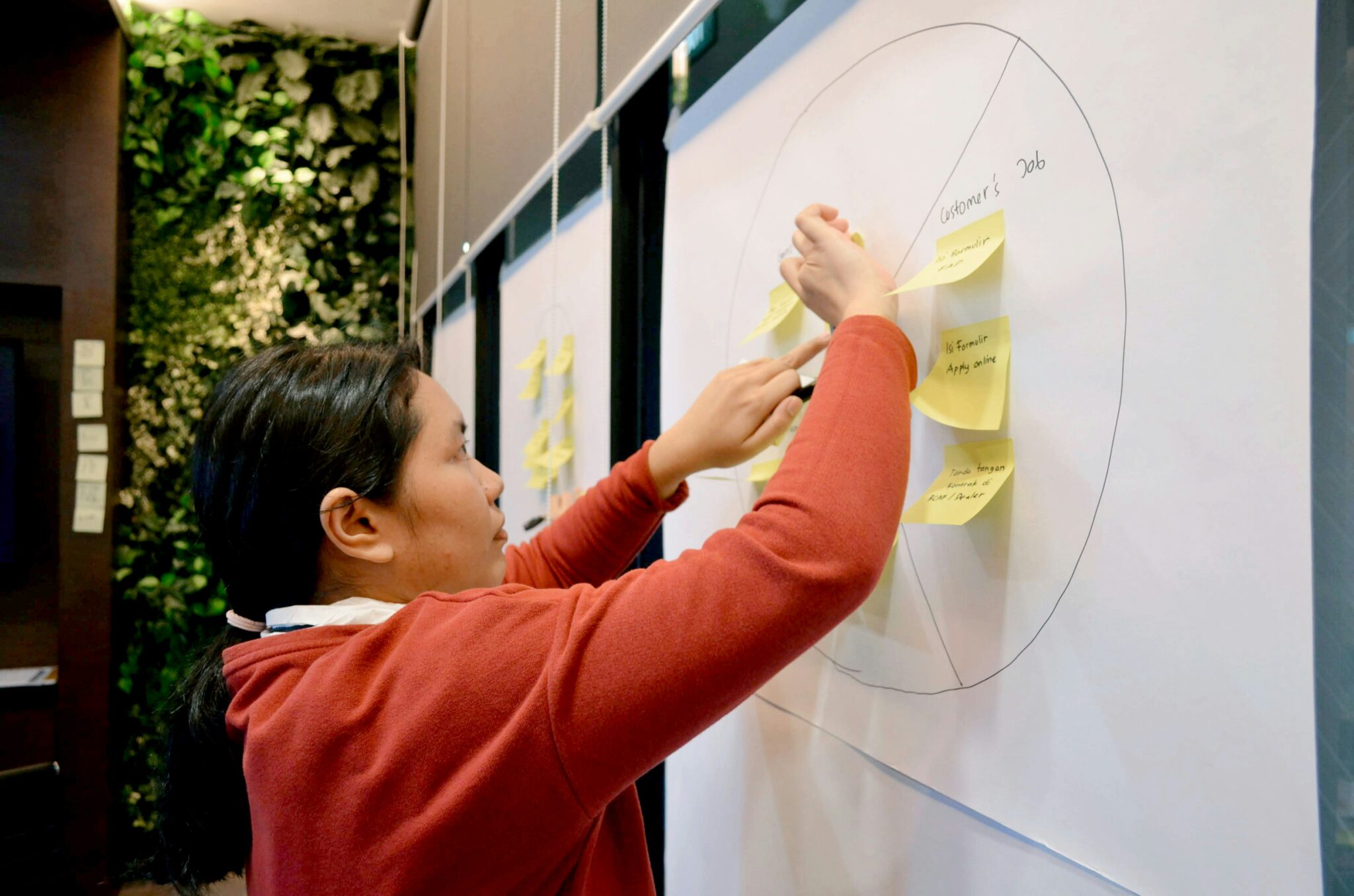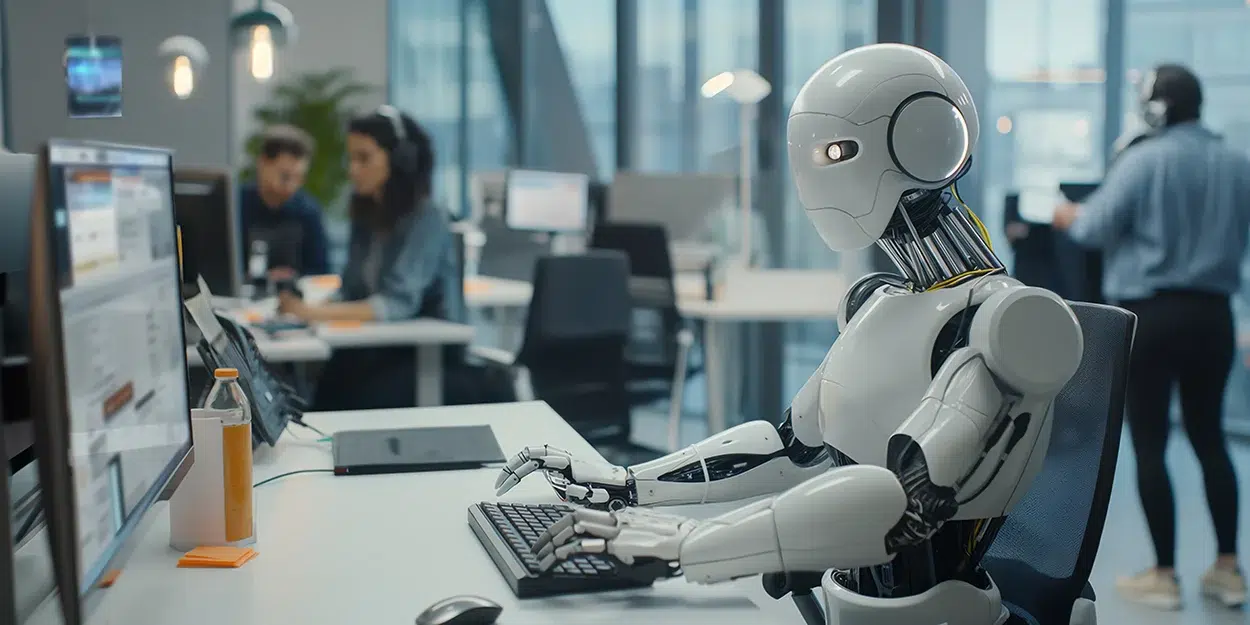As UX Designers or Researchers, we’re frequently looking into our users’ demographics because knowing who our users are can help us serve their needs better. But do we ever stop to consider the quintessential makeup of our community? I thought it might be fun to see who is pursuing a career in User Experience, how that’s changed over the years, what advantages we have, and what challenges we are facing.
If I were to create a UX Designer persona using statistical averages from multiple recent studies, a typical designer would be a 35-year-old, white female, with a bachelor’s degree, earning $65,000 a year, and working between 40-50 hours per week.
For the most part, these statistics haven’t changed a great deal over the years. However, when compared to a similar study from 2017, there were 10% more male designers and there were one-third as many who identified as Asian. Therefore the demographics do appear to be growing more diverse over time.
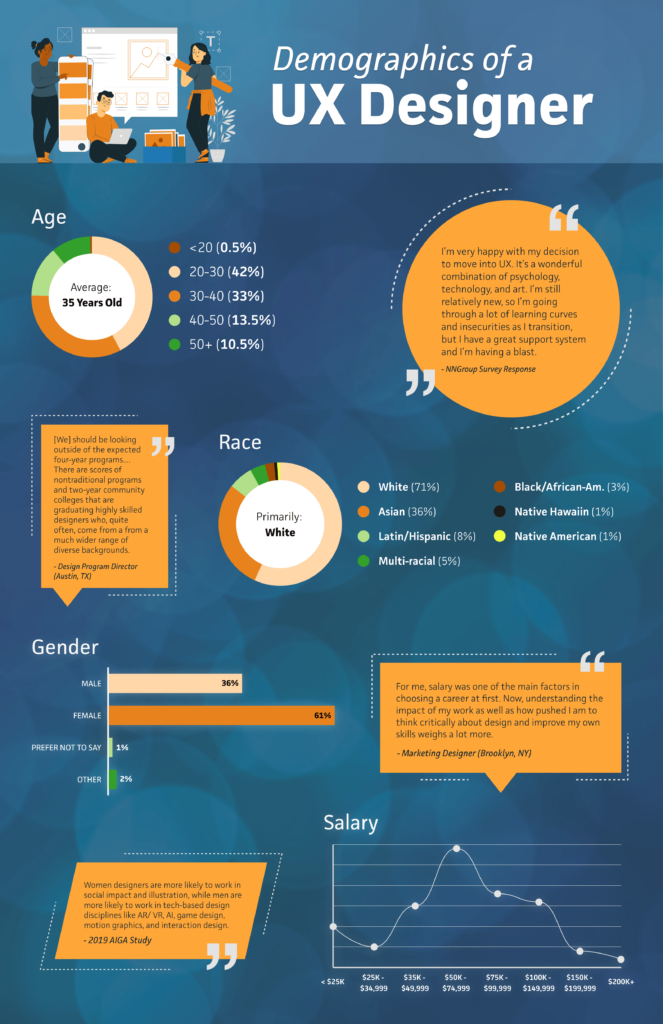
WHAT TYPES OF TASKS DO UX PROFESSIONALS PERFORM?
Unsurprisingly, NNGroup found that 93% of the UX community worked with websites or web apps at some point within a 5 year period. There was a smaller percentage that worked on not-so-common projects involving kiosks, packaging, sensors, and interactive exhibits. It just goes to show that if you’re interested in differing mediums there’s room for exploration in the UX field.
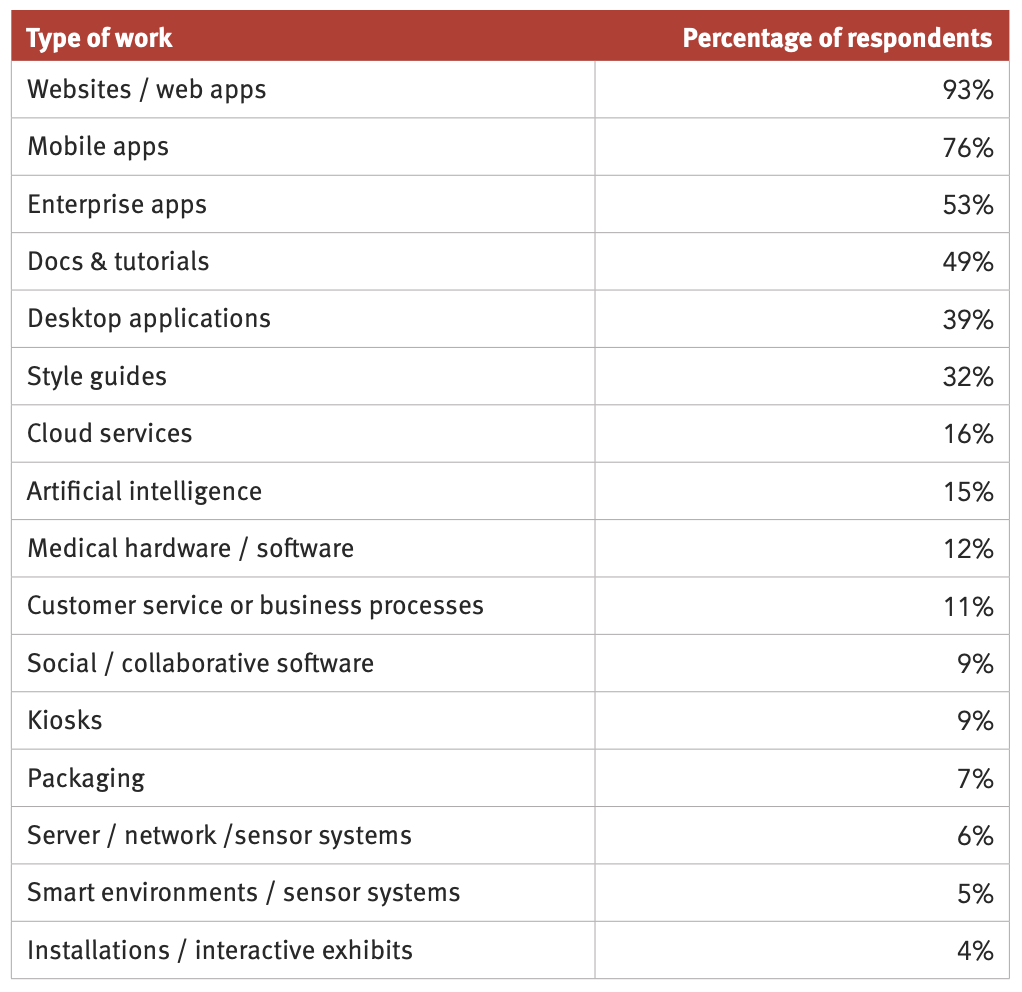
What about the tasks professionals perform to enact their work? It’s just as varied. “Popular activities, which are carried out by around 90% of UX practitioners, include: qualitative usability tests, heuristic reviews, constructing user journeys, creating flows or storyboarding, and prototyping. (NNGroup)”
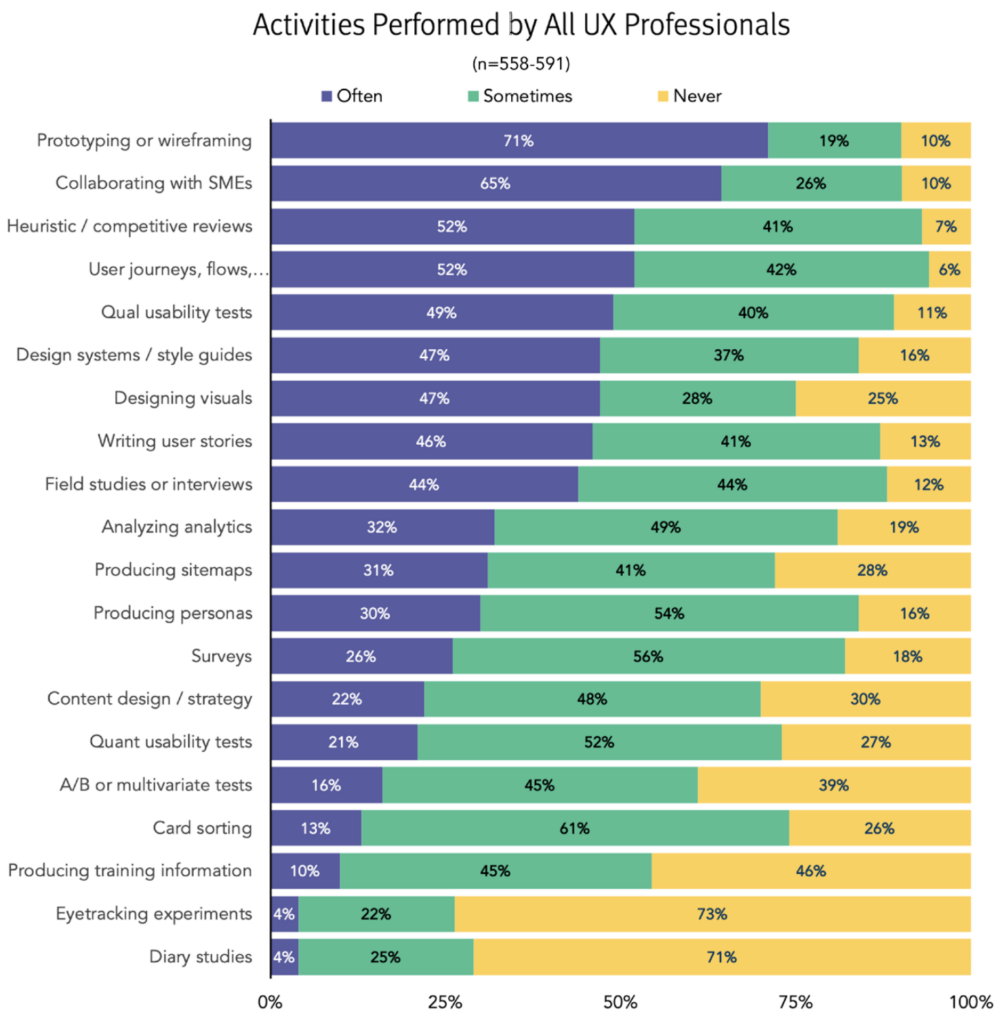
ADVANTAGES OF A CAREER IN UX
Are UX Designers happy with their roles? Career Explorer suggests they are, showing that UX Designers rate their job happiness a 3.5 out of 5, putting them in the top 30% of all careers.
Similarly, NNGroup asked survey participants to rate their career satisfaction on a scale from 1 to 7 (1 indicating completely dissatisfied, and 7 completely satisfied). The average score was 5.37, which is the same as the results from their 2013 study. So it would seem that in terms of job satisfaction, UX Designers fair pretty well across multiple studies and findings.
You don’t have to take my word for it, here are some of their participant’s responses:
“I really enjoy the work and feel I am making a difference.”
“The software that I’m building is genuinely helping people. The people I work with are very knowledgeable. I enjoy so many aspects of my job. I could pinch myself. :)”
“I love what I do. Not a single day goes by where I’m not challenged creatively and mentally.”
CHALLENGES FACING UX
That doesn’t mean it’s all fun and games. The NNGroup also compiled a list of sources for dissatisfaction, including:
- Lack of career progression
- UX practitioners aren’t doing enough UX
- Lack of access to training, mentorship, or guidance
- Burnout: too much work and too few people
- Lack of understanding/appreciation for UX in their organization
- Uninteresting work or monotony
Job stability is a potential concern in the UX industry as well. According to AIGA’s 2019 study, only 4% of designers feel confident in the security of their current position, which decreased by 25% from 2017, while the percent of designers that worry about stability tripled.
Here are some specific concerns shared by participants in the NNGroup survey:
“I still don’t feel like I’m doing real UX. I want to be more involved in the early stages of the products, doing more testing. My work is more UI than UX, even though my enterprise considers me as a UX designer.”
“I also think that I should be conducting more user research and usability testing. Unfortunately, nobody in this company seems to understand that those activities should be as much [a] part of my job as wireframing and prototyping.”
“It’s a daily struggle to ensure we are user focused, rather than business- or product-focused and it brings me into conflict with stakeholders on a regular basis – it’s exhausting, we can’t just build, build, build and not measure or check!”
HOW HAS COVID-19 IMPACTED A CAREER IN UX?
The bottom line here, is that job prospects in the UX Role are currently booming. A study by Glassdoor indicates there’s been a significant increase in remote job offerings (roughly 60%) from August 2019 to August 2020. Glassdoor also reported seeing more of an increase in overall job postings, than in any other industry, “Tech job openings increased 13.4 percent month-over-month. This large increase is driven primarily by shifting consumer demand for e-commerce and other online services.”
If you think about it, COVID-19 might also help solve some of the career dissatisfaction issues outlined earlier, because it’s providing new and interesting problems to solve, and likely potential for growth where it otherwise might not have been available.
CONCLUSION
There you have it- a peek into the demographics, advantages, challenges, and future prospects facing UX professionals. I’m hoping you found it encouraging because the data paints a pretty bright future in design and the tech industry overall.
